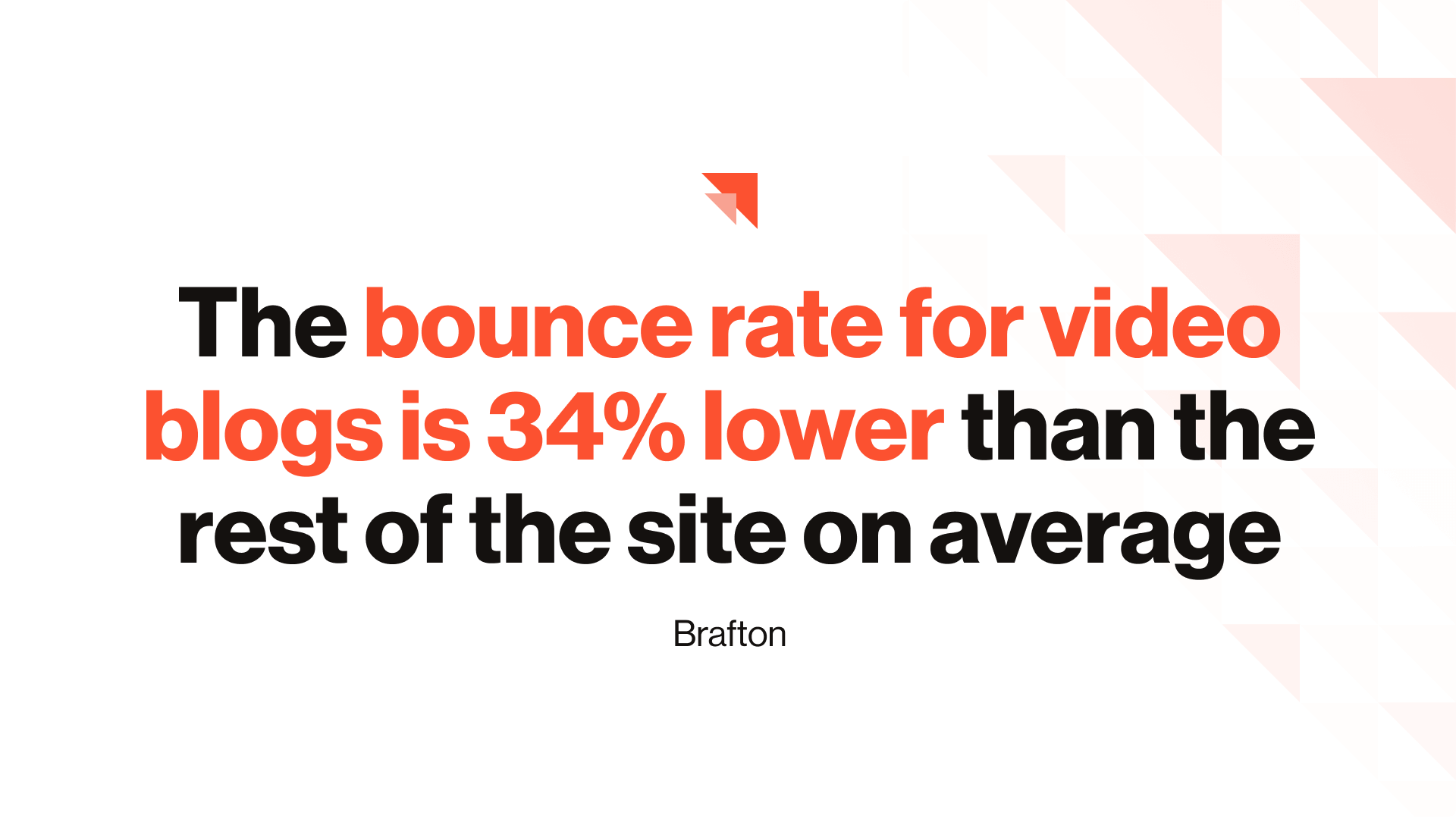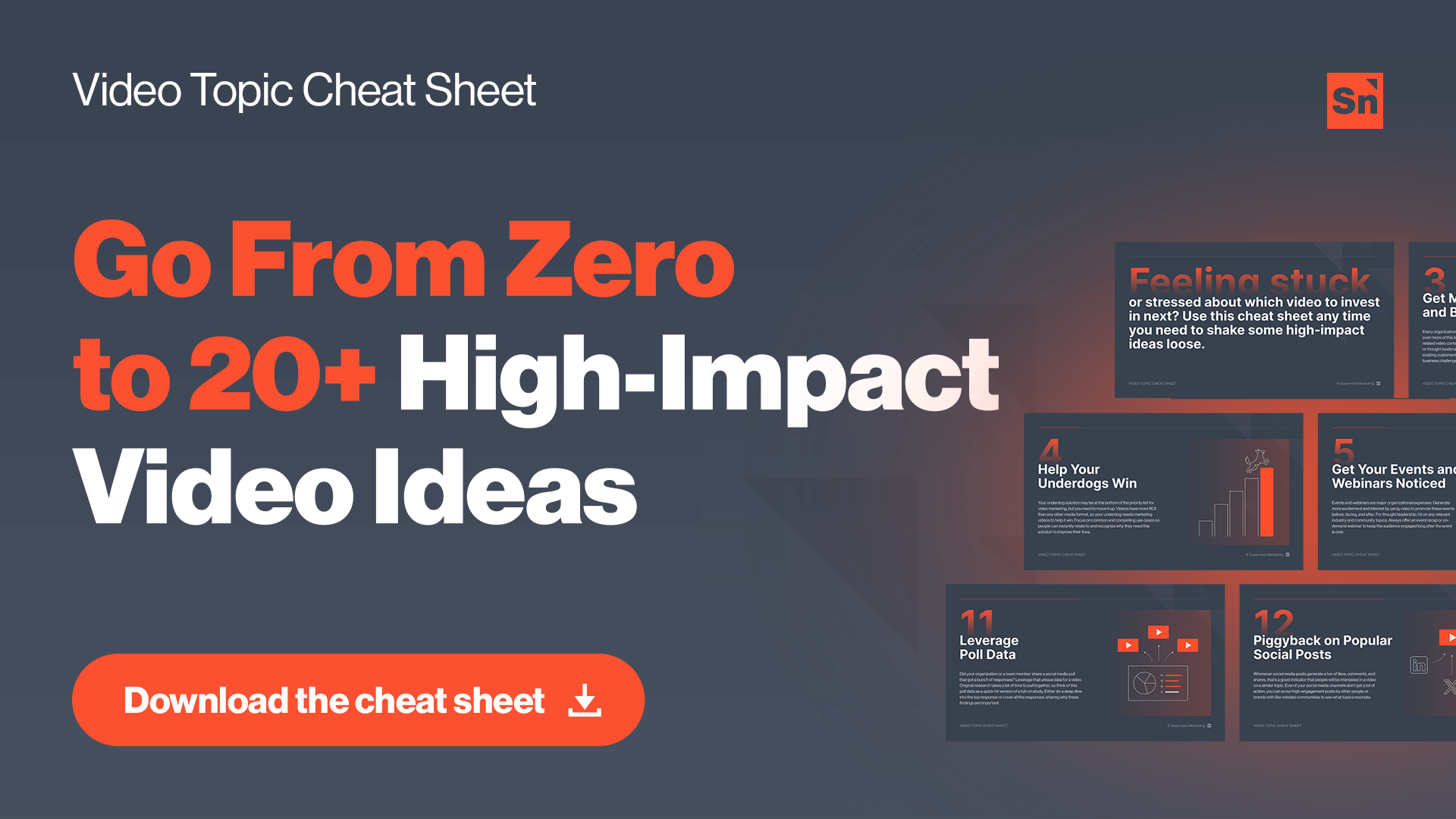For some strange reason, there’s a major disconnect between SEO and video out there.
Marketers are laser-focused on their SEO content strategy—which is awesome and I applaud that. But, they’re also pretty dead-set on just creating keyword-focused blog content and optimizing the bejesus out of every page on their website.
They don’t want to expand their horizons into video marketing because they’d rather concentrate on executing tried-and-true SEO tactics.
But video shouldn’t be written off as “just another shiny distraction.” All signs point to video marketing being one of the smartest strategic moves you can make to help your SEO.
People Stay on Your Website Longer
With written content, website visitors tend to quickly skim content rather than become immersed in it. When you include video content, you’re able to really draw your audience in, keeping them planted firmly on the page.
Consider the fact that the average time-on-page for B2B websites is 1.37 minutes. If an engaging 4-minute video holds your visitors’ attention, you’re doubling the average dwell time from watch time alone.
Compared to webpages with no video, those with video have a time on page that is 40% longer. When visitors stay on your site longer and engage with multiple pages, that’s a strong indicator that people find the content useful. And, search engines may reward your site with higher rankings.

Your Bounce Rate Is Lower
Since video makes people linger longer on your website, it reduces the bounce rate. The bounce rate for blogs with videos is 34% lower than the average bounce rate.
Why does bounce rate matter? A reduced bounce rate benefits SEO by indicating:
- A positive user experience
- Longer dwell times
- Greater content relevance
When someone lands on a website page, they make a split-second judgmental decision. Will they get the information they need? Or, should they go back to the search results to find a better option?
Video gives searchers the confidence that they’re in the right place, reducing bounce rate and sending happy little signals to search engines.
You Have Higher Click-Through Rates
Videos stand out above everything else whenever someone performs a search query. Video thumbnails typically take up a quarter of Google search results. When Google pulls and features a thumbnail from videos on your website, you are immediately more visible to searchers.
Thumbnails have a magnetic effect when they strike the right balance between grabbing attention with visuals and clearly communicating the topic through text. If your video content consistently appears in search queries, people will start clicking and watching videos on your website in droves.
Search engines interpret a higher click-through rate (CTR) as a sign of the quality and relevance of your content, which leads to improved rankings over time. Since videos stand out so prominently in search results, it’s one of the most effective types of content to produce when you’re on a mission to boost click-throughs.
You Win More Featured Snippets
A featured snippet is one of the most coveted achievements in SEO. When you land a featured snippet, your content has taken Position 0.
Search engines need to give the people what they want, so they too recognize video as a valuable learning tool that is easy to consume. Especially for “how-to” and informational searches, video content is more likely to win those featured snippets.
Featured snippets get over one-third (35%) of the total click share. If your video content lands in these snippets, it can result in higher click-through rates and increased organic traffic. Overall, snippets lead to greater brand visibility and stronger domain authority.
You Get More Backlinks
Backlinks are a necessity for strong SEO results. When you increase the number of backlinks to your website, your authority score increases which helps you rank better in search results.
Okay, here’s the bummer with backlinks—growing backlinks organically takes time. If you’re only creating written content, it can take longer because there is so much competition with this familiar content format. Creating more visually appealing content will help your content stand out so you can win the backlink game.
Infographics are a step in the right direction, but they aren’t as dynamically visual as videos. Videos are the most engaging and shareable content you can possibly produce. Create valuable video content, and you’ll have an easier time attracting backlinks from other websites and publications.
You Have More Diverse Content
Search engines favor diverse types of content. If one website only has written content and another offers a range of written content, infographics, and videos, chances are higher that the latter will rank higher.
People also favor diverse types of content, especially videos, which have been and will continue to be in high demand.
By embedding videos on your website and blog, you’ll improve user engagement in the ways we already discussed—increased dwell time and reduced bounce rates. Video improves the relevancy and effectiveness of your content for a user’s query as well.
Videos will even strengthen existing written content by serving as a visual aid that delivers additional context and value.
By incorporating videos into your marketing strategy, you’re providing a richer and more informative experience for your audience. Ensuring your content matches user intent and exceeds their expectations is only going to further your SEO progress.
This Isn’t Shiny Object Syndrome, Video Is a Strategic SEO Move
There’s been a significant shift in the preferences of searchers and search engine algorithms.
Your audience prefers a mix of video content over written content alone. Search engines recognize these evolving user preferences, so they are prioritizing videos in search results more than ever before.
Including more videos in your marketing strategy isn’t just about following the latest trend and succumbing to shiny object syndrome. You’re listening to the needs of your prospects and customers by aligning your strategy with their preferences. As a bonus, you’re aligning your marketing efforts with what the algorithms want too.

